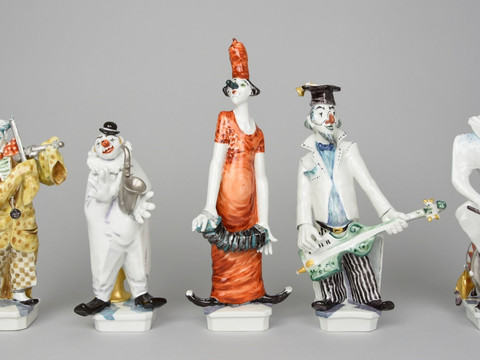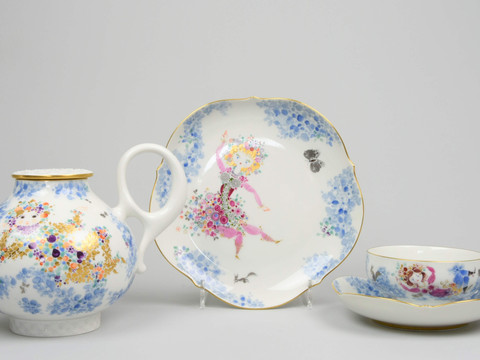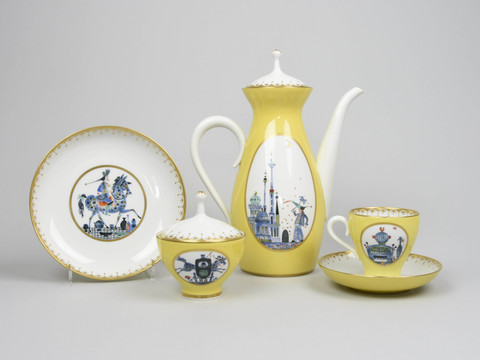The Japanese Palace - the porcelain palace of Augustus the Strong - provides an exciting yet fitting setting. Despite all the contradictions to the socialist form of government, the great baroque tradition of the first European porcelain manufactory remained influential. Monumental murals for the Palace of the Republic and other central buildings of the GDR, state gifts and a medal that Sigmund Jähn carried with him on his space flight bear witness to the unbroken high prestige value of Meissen porcelain as a luxury good. Design sketches, theater costumes, film clips, magazines, etc. open up a view of the art and cultural-historical context of Meissen porcelain in the GDR era.
The exhibition also examines the identity-forming role of the world-renowned manufactory from the perspective of citizens in East and West, where a large proportion of Meissen porcelain was exported in exchange for foreign currency. What remained in the home country and what significance did Meissen have in everyday life and collective memory on both sides of the Wall? Artistically sophisticated photo series from the 1950s and late 1980s, as well as interviews with contemporary witnesses, tell of everyday working life in Europe's largest porcelain manufactory.



